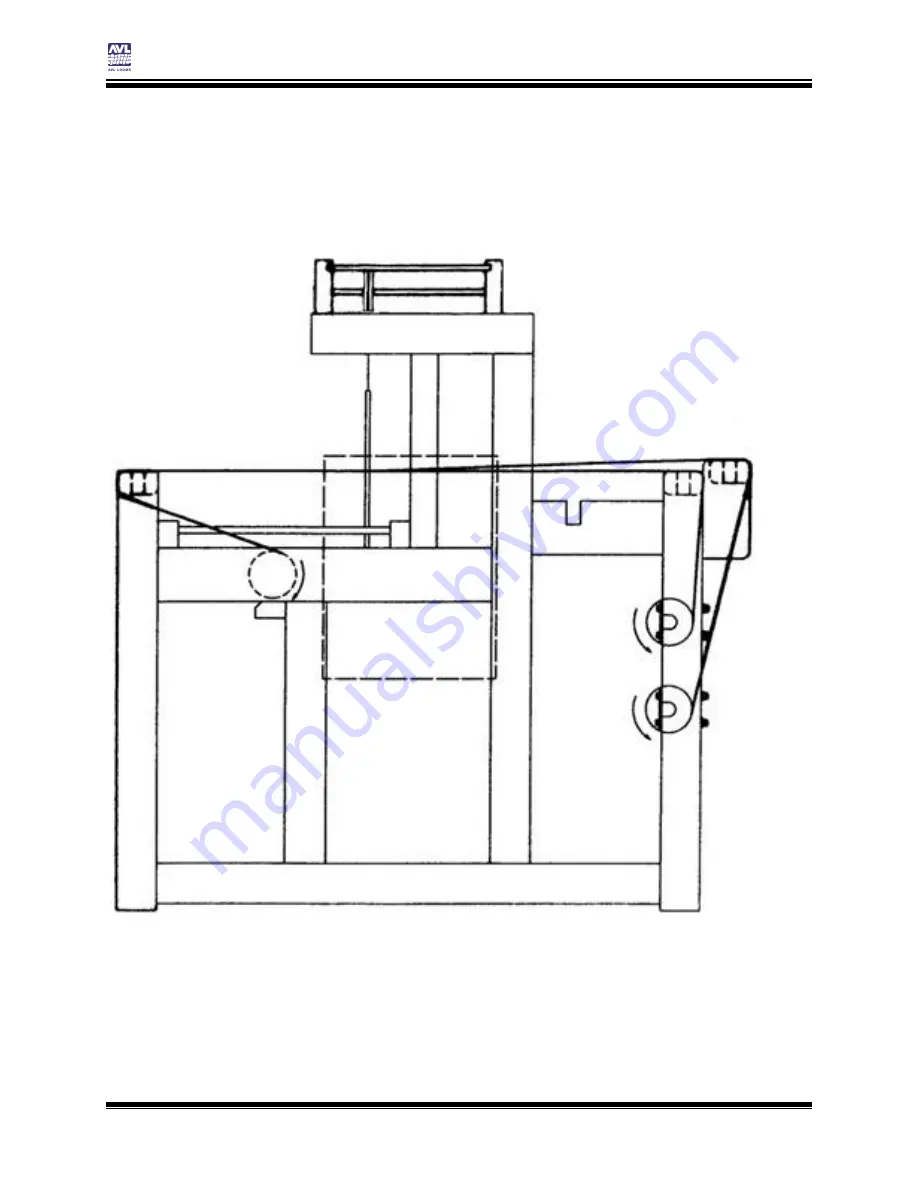
V-Series Dobby Loom User’s Manual
Weaving Instructions
Threading, Sleying, & Tying On
Page | 90
Now you can remove the tape marker and, turning the top of the Beam
away from you, wind so the apron is wrapped once around, holding itself in
place. Route the apron underneath the Cloth Beam and, towards the
harnesses. Spread it out flat and center it over the Cloth Beam and insert
the metal rod into the loops at the hem.
Figure 73 - Warp Routing
Now tie the ends to the metal rod. Starting from the middle, bring a first
bundle toward you over the apron rod, then around and under it. Divide it in
half and bring one half up on each side of the bundle. Use the ends to tie a
surgeon’s knot. It is the same as the first tie you make tying a shoelace,






























